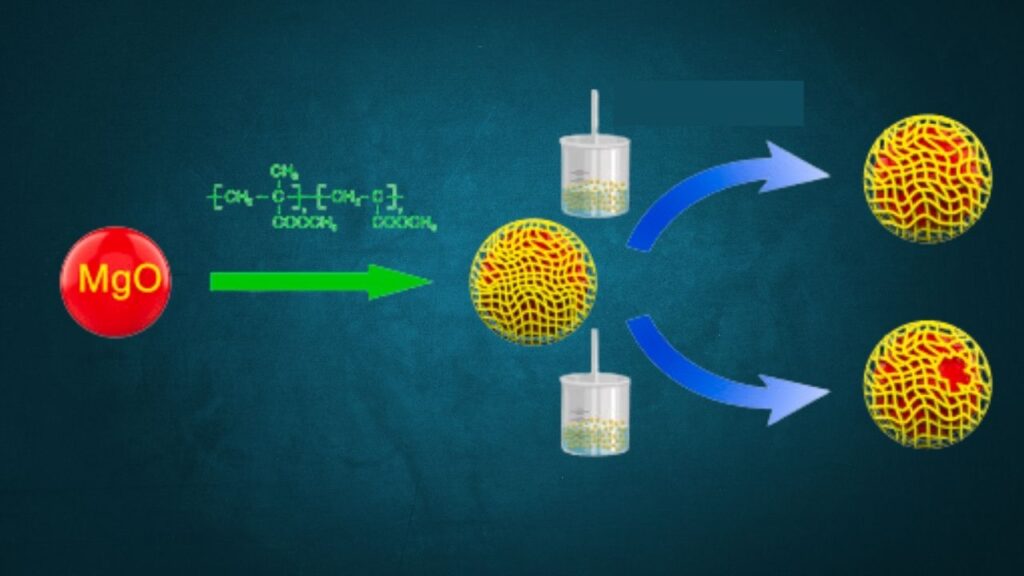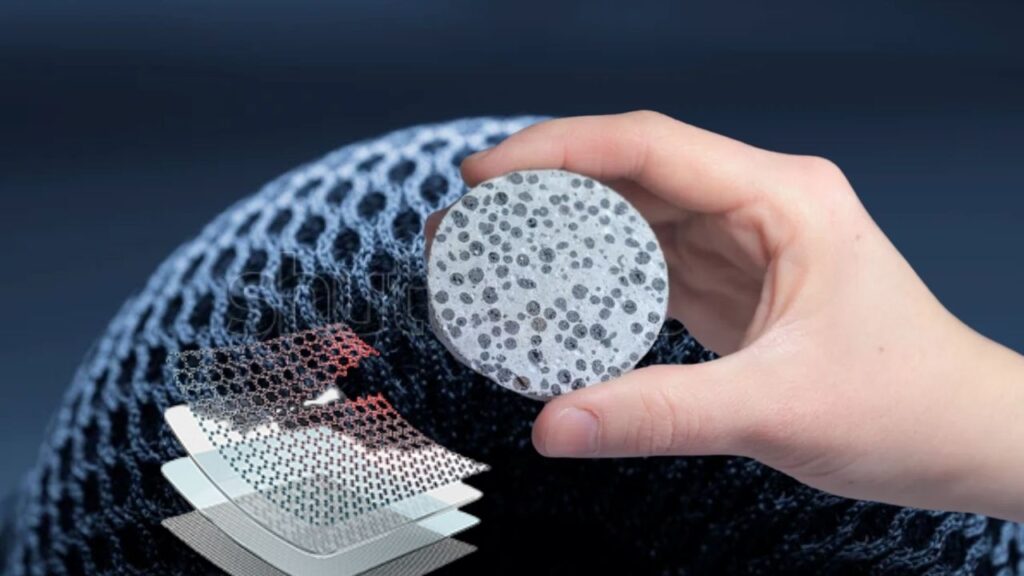Smart Materials: In today’s fast-paced world, smart materials are emerging as game-changers, offering exciting possibilities that could completely redefine daily life. These materials are specially engineered to react to their surroundings — changing their shape, color, or properties based on stimuli like heat, light, or pressure. This responsiveness opens doors to innovations across industries, from healthcare and fashion to architecture and energy.

Whether you’re a curious student or a seasoned professional, understanding smart materials helps us appreciate how technology is seamlessly blending into our environments to make them more efficient, adaptive, and sustainable.
Table of Contents
What Are Smart Materials?
At its core, a smart material is one that can sense changes in its environment and respond accordingly. Imagine a window that darkens automatically when the sun gets too bright or clothing that cools you down on a hot day. These are real-world examples of smart materials at work.
Unlike traditional materials, smart materials can alter their physical or chemical properties — such as shape, stiffness, or color — without needing bulky electronics or batteries. This self-sufficiency makes them highly efficient and ideal for next-generation applications.
Smart Materials
| Aspect | Details |
|---|---|
| Definition | Materials that respond dynamically to environmental stimuli such as temperature, light, pressure, or electricity. |
| Common Types | Shape-memory alloys, piezoelectric materials, thermochromic materials, self-healing polymers. |
| Applications | Wearable tech, adaptive clothing, self-healing surfaces, energy-efficient buildings, healthcare sensors. |
| Market Growth | Expected to reach $86.2 billion by 2030 globally, growing at a CAGR of 11.2%. |
| Future Potential | Development of “living materials” capable of self-regeneration and environment adaptation. |
| Official Reference | For more information, visit National Institute of Standards and Technology (NIST). |
Smart materials represent a fascinating intersection of science and daily life, offering dynamic solutions that enhance comfort, efficiency, and sustainability. From clothing that adapts to our bodies to buildings that self-regulate temperature, these responsive technologies are not only reshaping how we live but also how we think about the future of materials.
As research advances, the potential of smart materials will only grow, ushering in an era where our environments are more intelligent, interactive, and in tune with our needs. Whether you’re a curious learner or a professional innovator, embracing smart materials today means stepping into the future of technology.
How Smart Materials Work: The Science Behind the Magic
To understand smart materials better, it helps to break down how they operate:
1. Sensing the Environment

Smart materials contain built-in mechanisms that detect changes in the environment. For instance, thermochromic materials change color when the temperature rises or falls. Others, like piezoelectric materials, generate an electric charge when pressure is applied.
2. Responding Effectively
Once a change is detected, the material adjusts its properties accordingly. A shape-memory alloy can return to its original shape after being bent, which is useful in self-healing applications or flexible electronics.
3. Self-Powering Features
Some smart materials can power their responses using energy harvested from their environment. For example, recent research from China has demonstrated fiber-based electronics that convert the body’s electromagnetic energy to power wearable devices without batteries.
Practical Applications of Smart Materials
Smart materials are no longer just laboratory curiosities; they’re becoming integral parts of daily life. Here are some key areas where they are making a real impact:
Responsive Textiles and Wearables

Imagine clothes that adapt to your body temperature or activity level, keeping you comfortable without manual adjustments. Smart fabrics embedded with sensors or conductive fibers can monitor health metrics like heart rate or hydration levels, all while remaining lightweight and breathable.
Example: Researchers have developed haptic carpets that use fiber electronics to provide tactile feedback, enhancing user interaction in homes or public spaces.
Self-Healing and Adaptive Surfaces

Buildings and vehicles coated with self-healing polymers can automatically repair minor damages like scratches or dents. This not only extends their lifespan but also reduces maintenance costs.
Example: Smart glass technology can switch between transparent and opaque states, controlling sunlight and heat flow, leading to significant energy savings.
Healthcare Innovations
Smart materials are revolutionizing medical diagnostics and treatment. Biosensors using smart polymers can monitor glucose levels or detect pathogens non-invasively, providing real-time data for personalized care.
Example: Sweat-activated sensors developed using responsive materials can help diabetic patients track their condition without blood samples.
Energy-Efficient Architecture

Climate-adaptive building materials adjust to environmental conditions to optimize heating, cooling, and lighting, reducing energy consumption and improving occupant comfort.
Example: Facades using phase-change materials absorb or release heat depending on the temperature, reducing the need for air conditioning.
The Future of Smart Materials: Living and Regenerating
Researchers are now pushing the boundaries by developing living materials — systems inspired by biology that can grow, repair, and adapt on their own. These materials promise to make our surroundings not just reactive but truly interactive and sustainable.

For example, materials that mimic natural regeneration could heal cracks in infrastructure or adapt their shape based on environmental needs without human intervention.
Step-by-Step Guide to Exploring Smart Materials
If you want to dive into the world of smart materials, here’s a simple path to get started:
Step 1: Understand the Basics
Start with learning the types and properties of smart materials — what stimuli they respond to and how. This foundational knowledge is essential for practical applications.
Step 2: Explore Real-World Examples
Look for case studies or product demos in wearables, healthcare, or construction. Many companies showcase smart materials in action through videos or exhibitions.
Step 3: Experiment with DIY Projects

If you’re hands-on, try simple smart material kits or experiments like making thermochromic color-changing paper or shape-memory wire projects.
Step 4: Stay Updated on Research
Smart materials are a rapidly evolving field. Follow authoritative sources such as NIST or peer-reviewed journals like Advanced Materials for the latest breakthroughs.
Step 5: Apply Knowledge Professionally
Whether you’re in engineering, design, or healthcare, think about how these materials can solve challenges in your field. Collaborate with material scientists or tech developers to innovate.
How Advanced Materials Are Making Flexible Electronics a Reality
Sustainable Tech: 5 Innovations That Could Make IT Environmentally Friendly
Terahertz Technology: The Hidden Spectrum That’s Set to Revolutionize Communication
FAQs About Smart Materials
What are the main types of smart materials?
The most common types include shape-memory alloys, piezoelectric materials, thermochromic materials, and self-healing polymers. Each reacts to specific stimuli like temperature, pressure, or light.
How are smart materials used in everyday products?
Smart materials appear in responsive clothing, self-healing phone screens, adaptive building windows, and medical sensors that monitor health.
Are smart materials expensive?
While some advanced materials can be costly due to manufacturing complexity, ongoing research and mass production are making them increasingly affordable.
Can smart materials be environmentally friendly?
Yes! Many smart materials contribute to energy efficiency and sustainability by reducing waste and lowering energy consumption.
Where can I learn more about smart materials?
Reliable sources include NIST, Grand View Research, and scientific journals like Nature Materials.



















